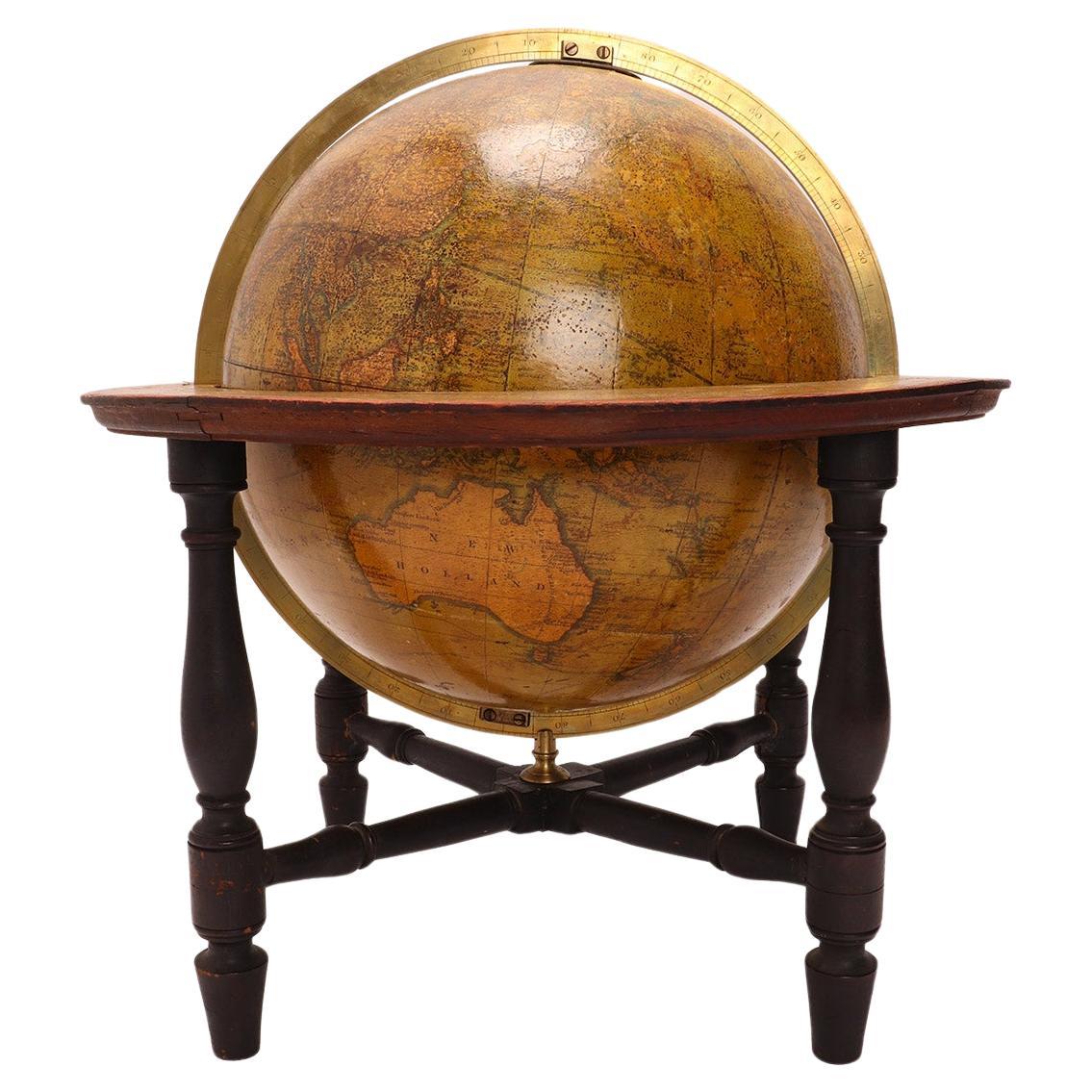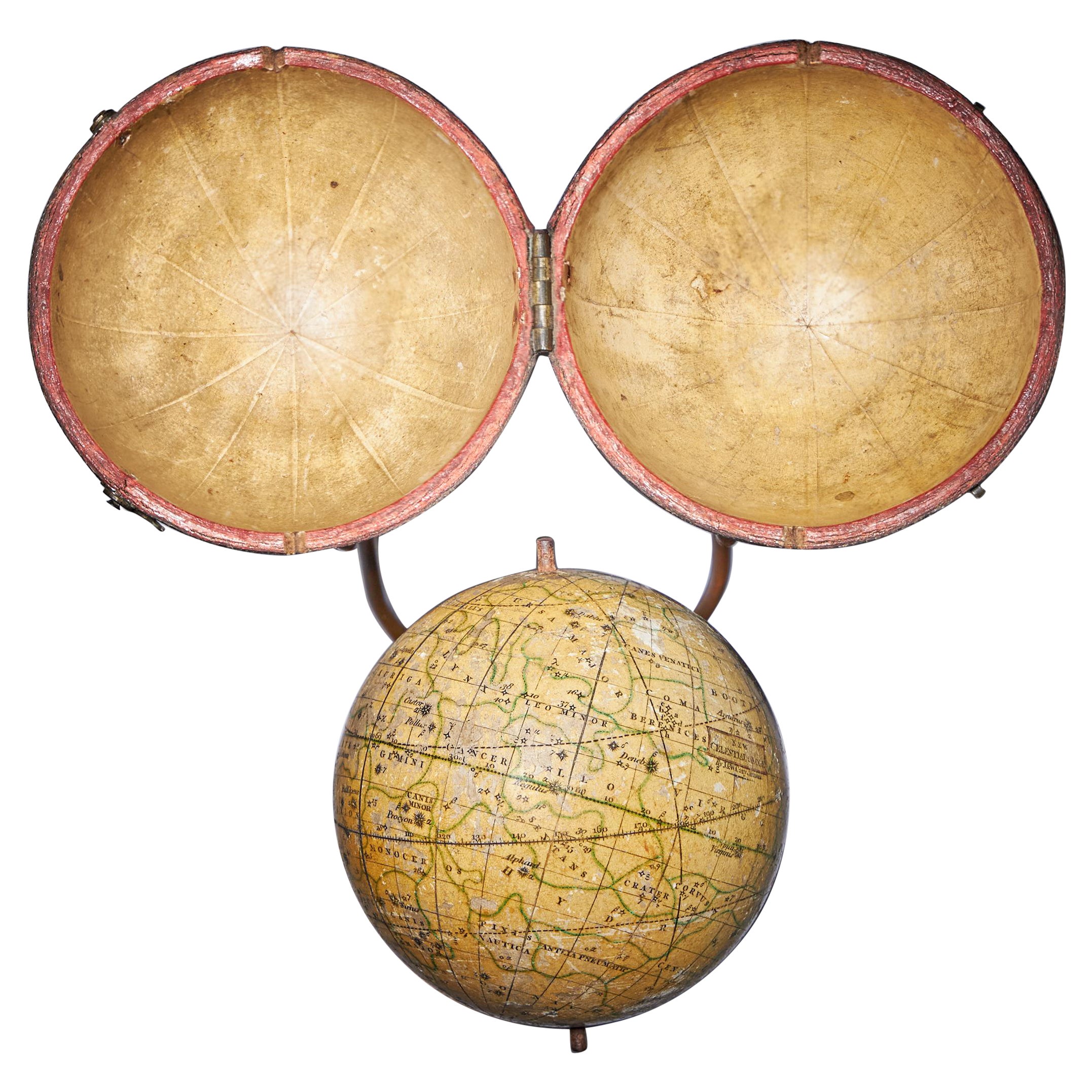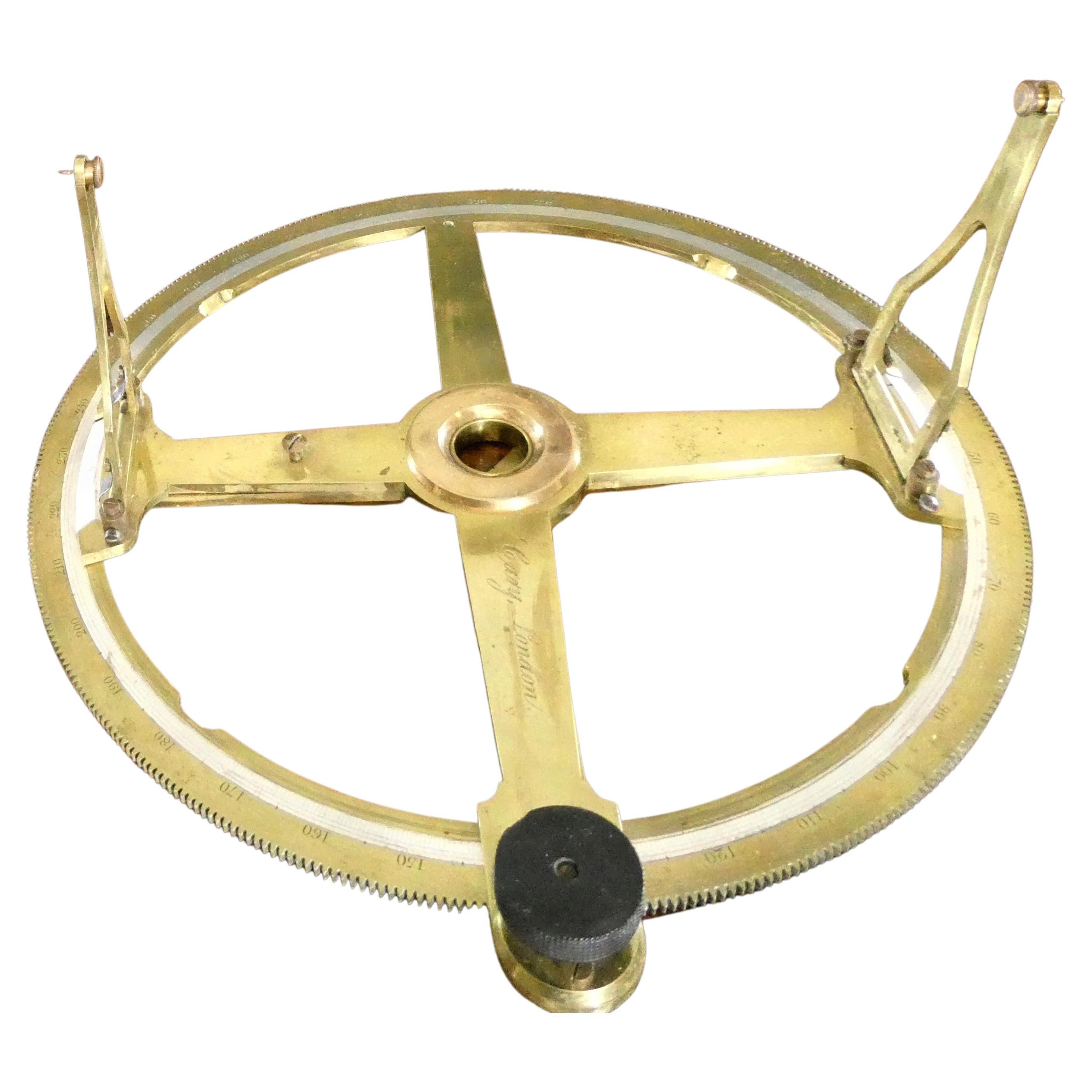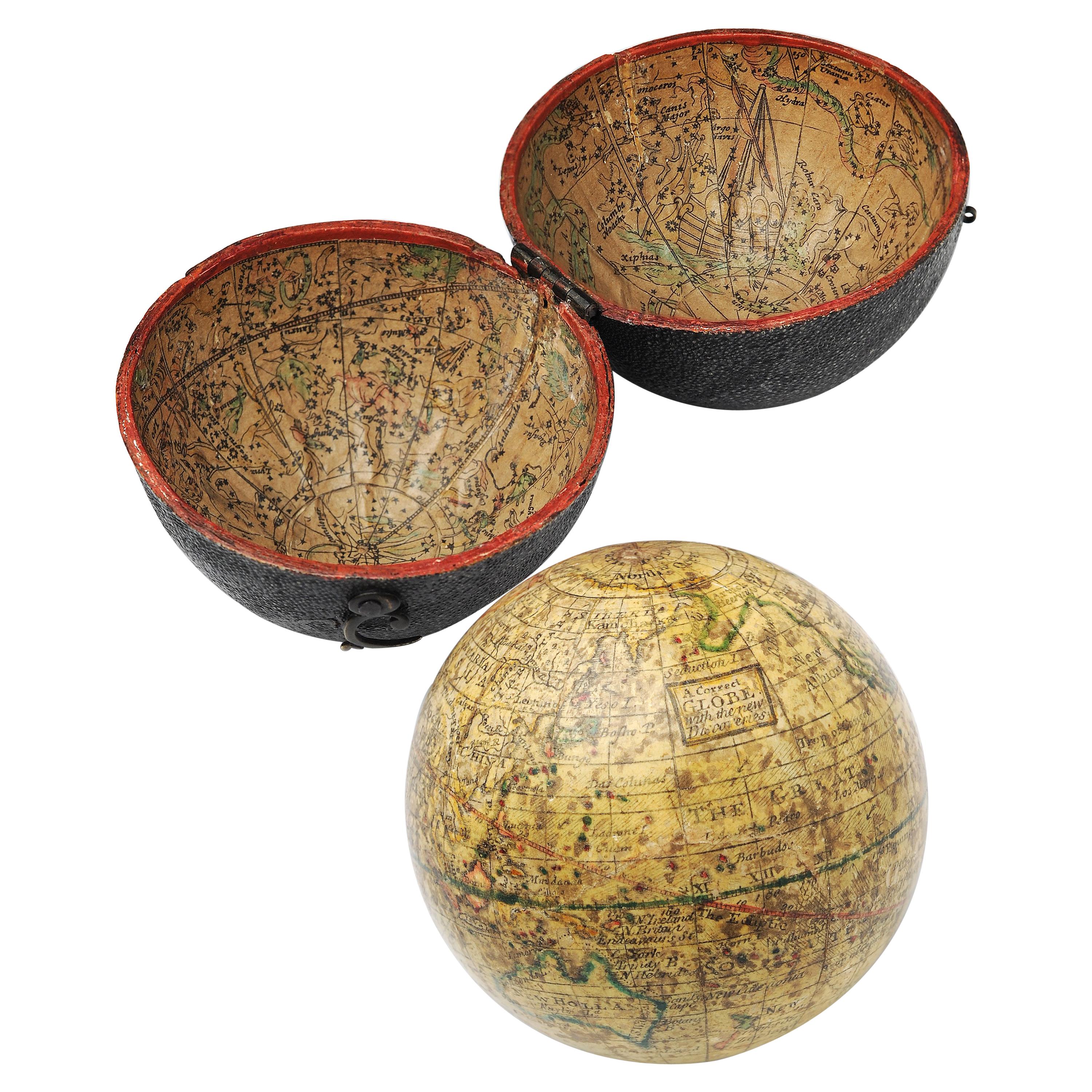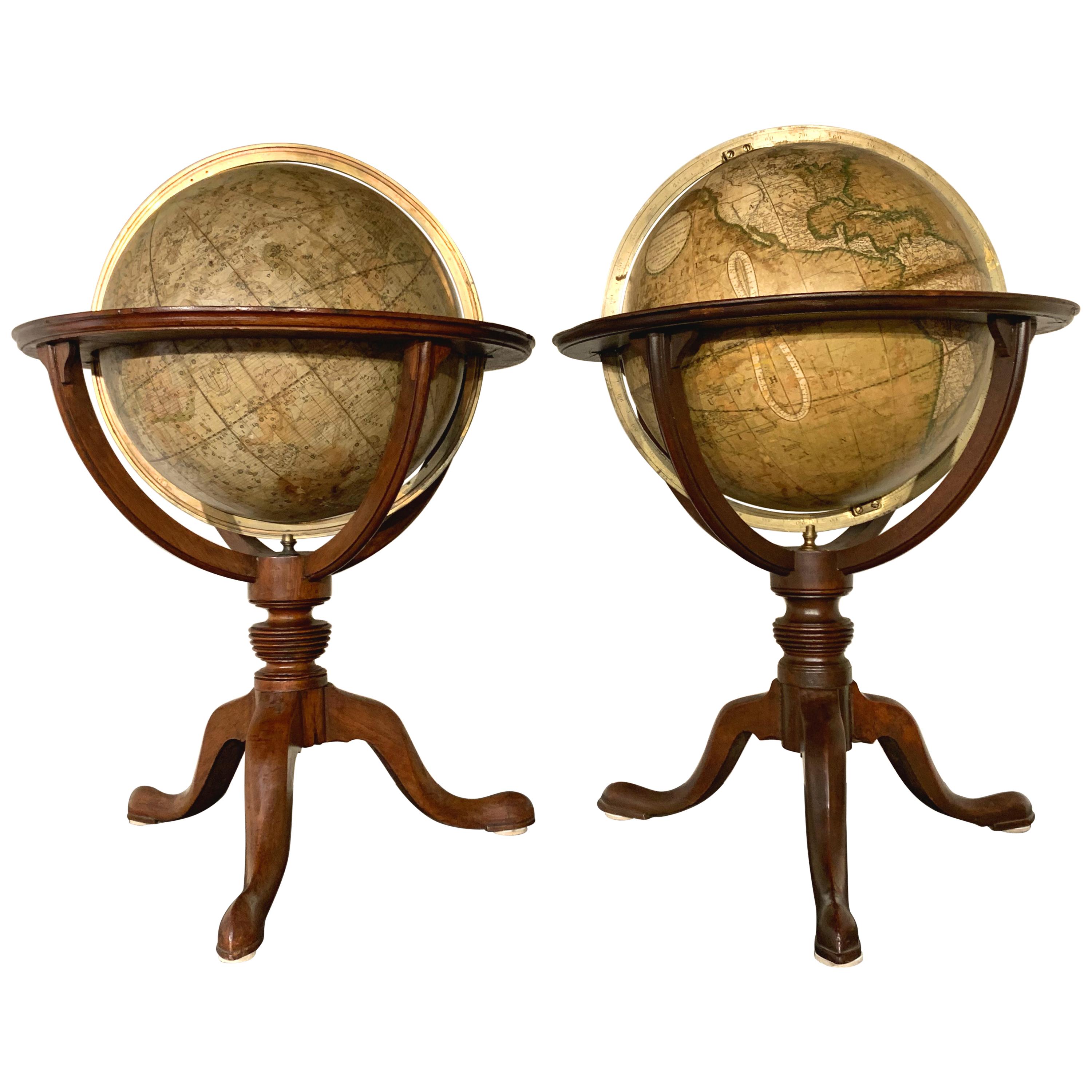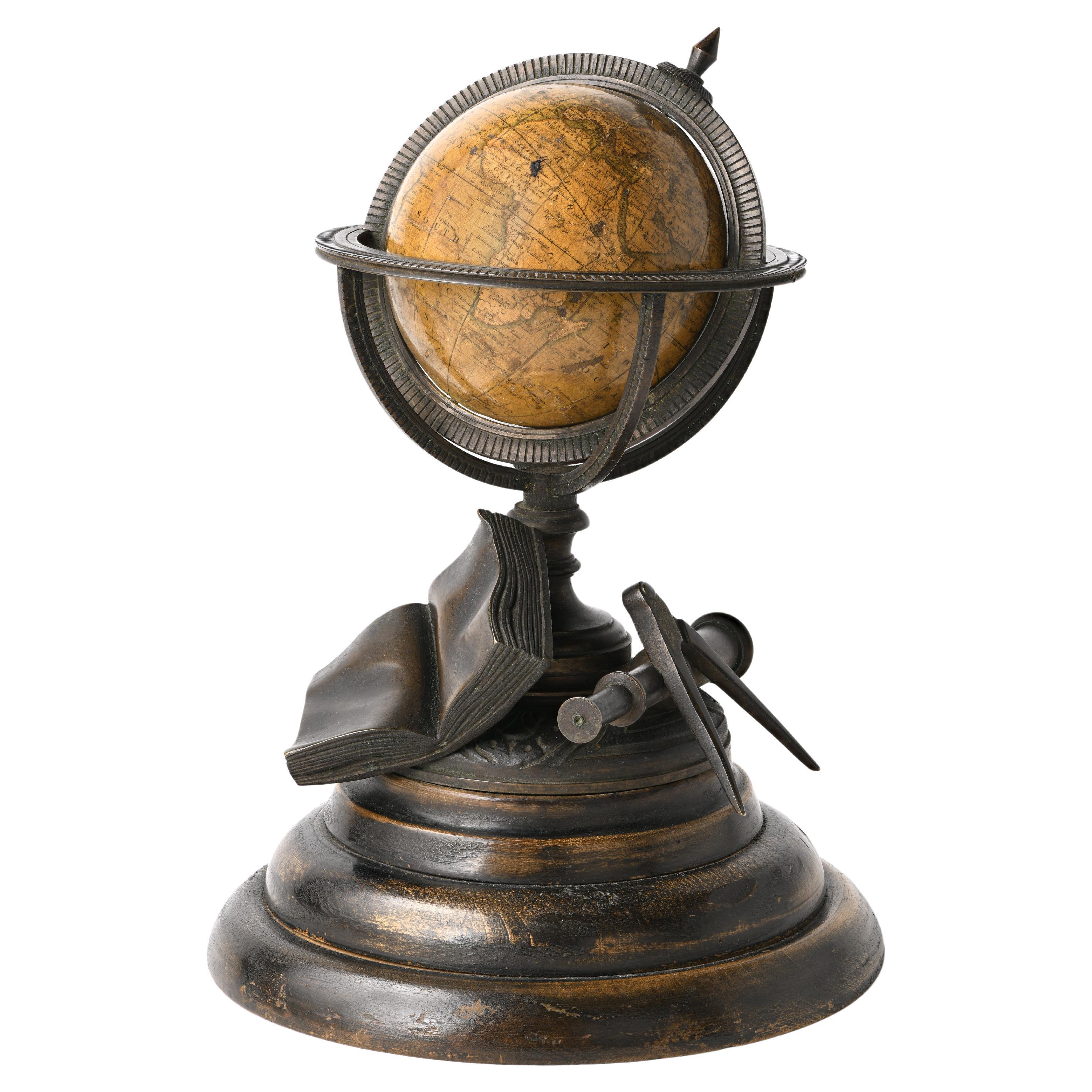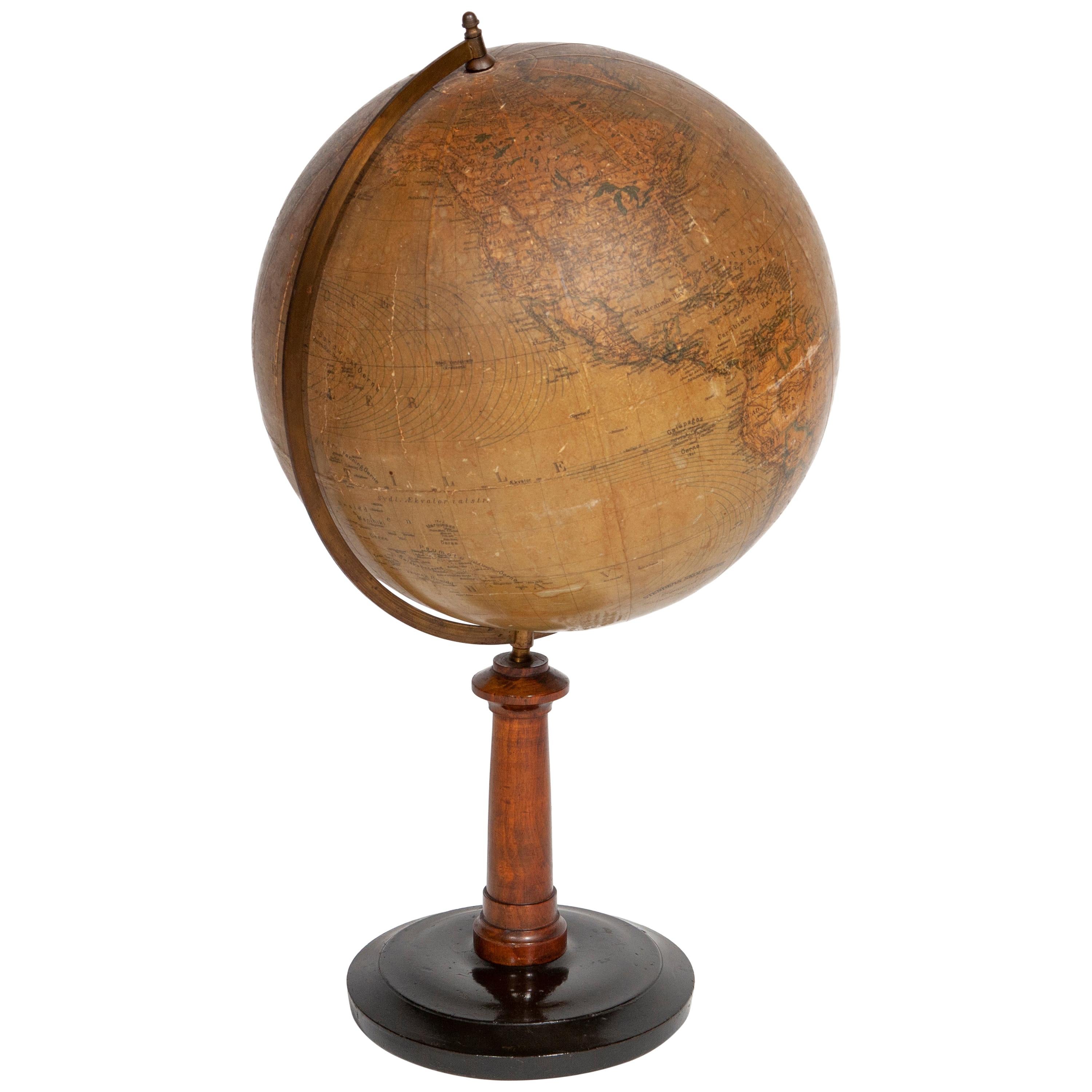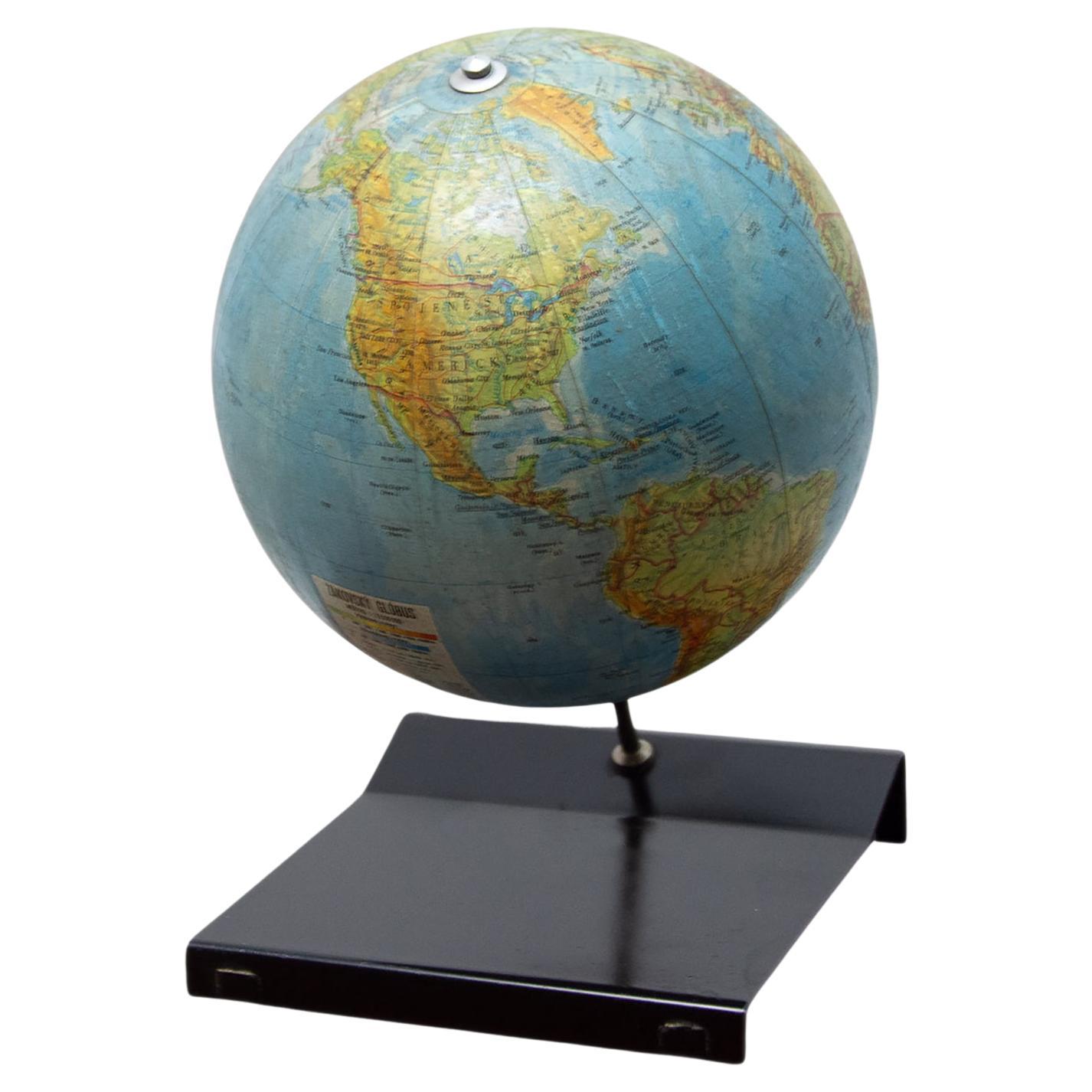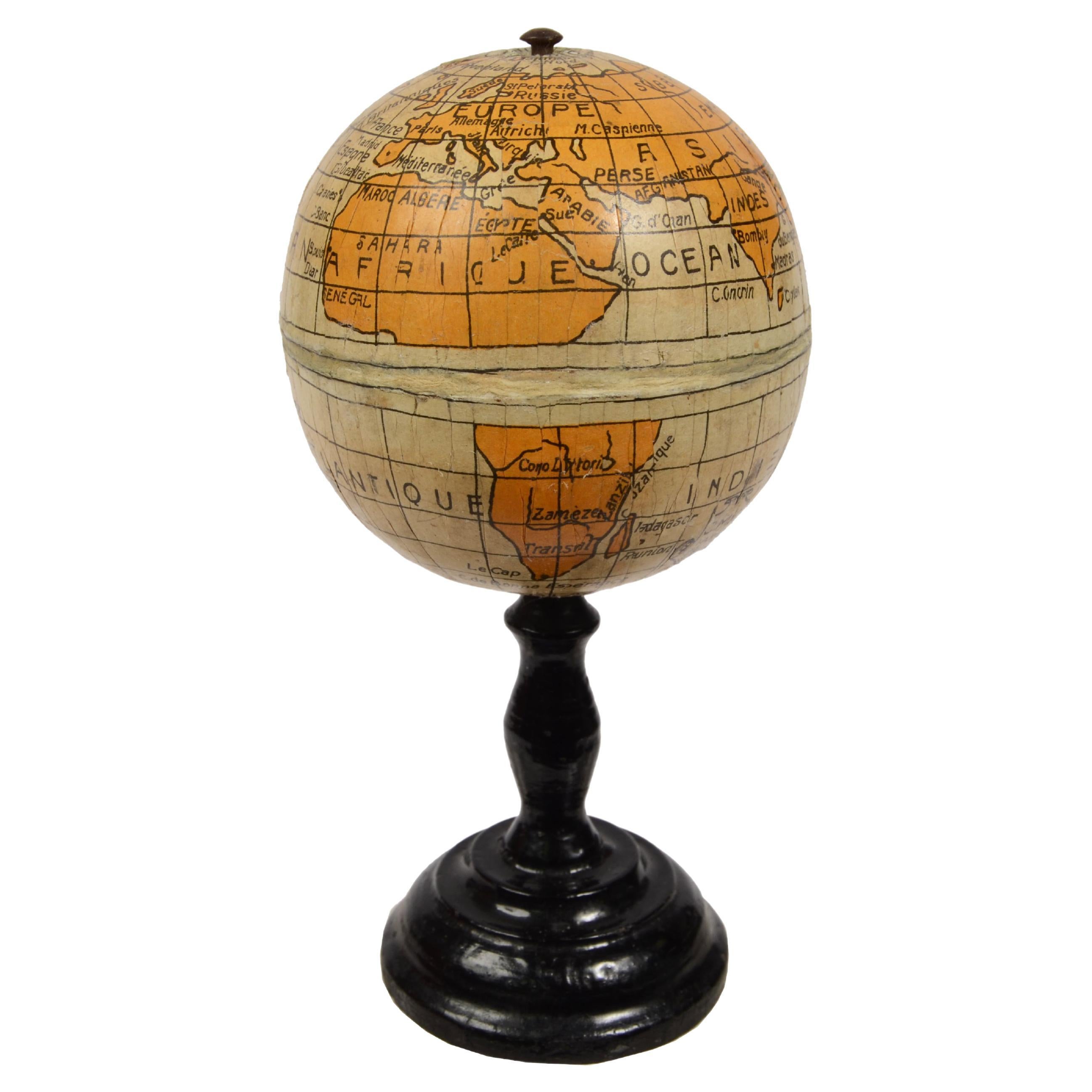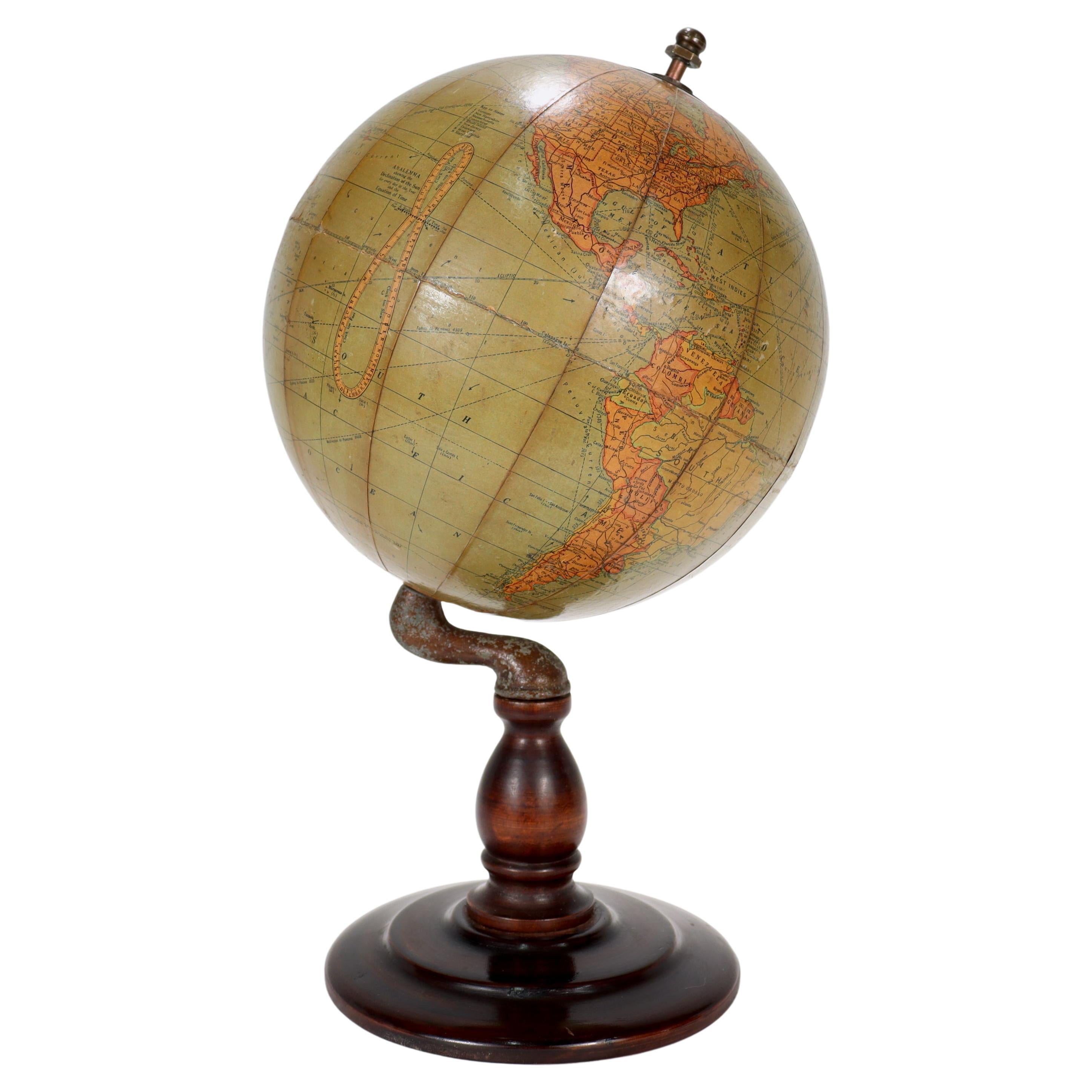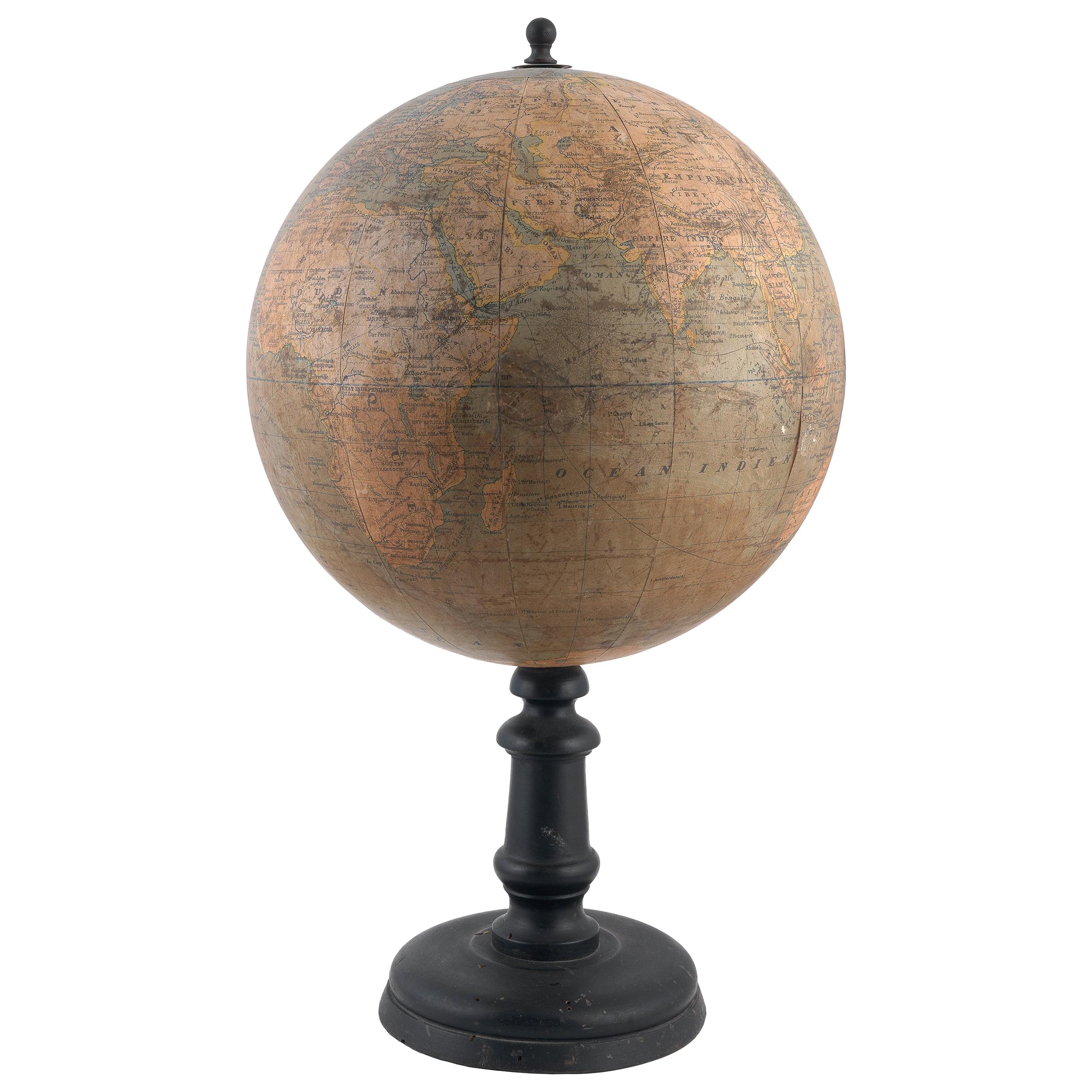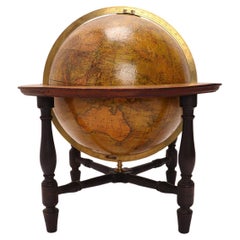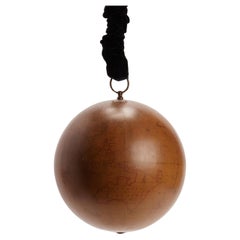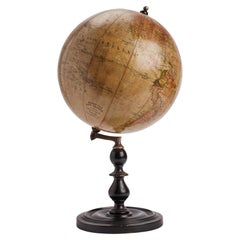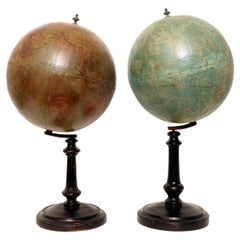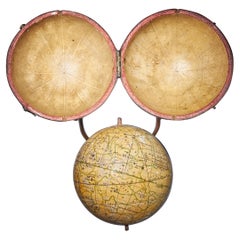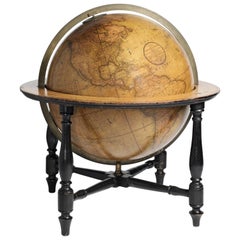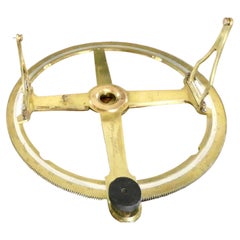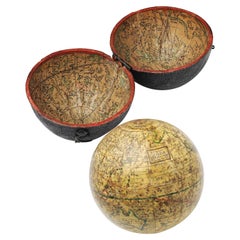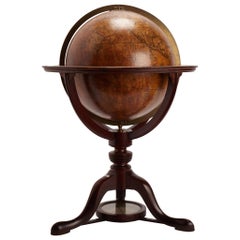
Terrestrial Globe Signed Cary, London, 1798
View Similar Items
Want more images or videos?
Request additional images or videos from the seller
1 of 8
Terrestrial Globe Signed Cary, London, 1798
$10,154.57List Price
About the Item
- Creator:Cary (Author)
- Dimensions:Height: 25 in (63.5 cm)Width: 16.5 in (41.91 cm)Depth: 16.55 in (42.04 cm)
- Materials and Techniques:
- Place of Origin:
- Period:1790-1799
- Date of Manufacture:1798
- Condition:Wear consistent with age and use.
- Seller Location:Milan, IT
- Reference Number:1stDibs: LU917122972212
About the Seller
5.0
Vetted Professional Seller
Every seller passes strict standards for authenticity and reliability
Established in 1991
1stDibs seller since 2011
246 sales on 1stDibs
Typical response time: 1 hour
Authenticity Guarantee
In the unlikely event there’s an issue with an item’s authenticity, contact us within 1 year for a full refund. DetailsMoney-Back Guarantee
If your item is not as described, is damaged in transit, or does not arrive, contact us within 7 days for a full refund. Details24-Hour Cancellation
You have a 24-hour grace period in which to reconsider your purchase, with no questions asked.Vetted Professional Sellers
Our world-class sellers must adhere to strict standards for service and quality, maintaining the integrity of our listings.Price-Match Guarantee
If you find that a seller listed the same item for a lower price elsewhere, we’ll match it.Trusted Global Delivery
Our best-in-class carrier network provides specialized shipping options worldwide, including custom delivery.More From This Seller
View AllRare 12 inches terrestrial globe signed Cary, London United Kingdom 1800.
Located in Milan, IT
Large 12" terrestrial globe made by the famous Cary brothers, made with a wooden frame, refined plaster polished to perfection, and colored paper gores. The globe is supported by a f...
Category
Antique Early 19th Century English Scientific Instruments
Materials
Brass
Terrestrial globe apres Mr. Rizzi Zannoni, Paris 1762.
Located in Milan, IT
Designed to be hanged to the ceiling, terrestrial globe, made out of paper machè and wood, brass hook. It is reported in the cartouche of the globe: globe terrestre d’après Mr. Rizz...
Category
Antique Mid-18th Century French Scientific Instruments
Materials
Brass
Terrestrial globe published by Ernst Schotte & co, Germany 1890.
Located in Milan, IT
Terrestrial globe in watercolored paper, fixed with an inclined axis through a small brass arm, mounted on a black turned fruit wood base. Published by Ernst Schotte & Co. Berlin, Ge...
Category
Antique Late 19th Century German Scientific Instruments
Materials
Brass
A pair of celestial and terrestrial globes, E.Pini, Gussoni & Dotti, Italy 1892.
Located in Milan, IT
Pair of Italian globes. On an ebonized wooden base, worked on the lathe, with a circular foot and perfect patina, are placed: a celestial globe of 9,2 inches, compiled by the enginee...
Category
Antique 1890s Italian Scientific Instruments
Materials
Wood
A poket sextant signed Stanley, London 1890.
Located in Milan, IT
A travel nautical instrument, sextant, to determine the ship’s position. The cover became the base of it. Signed Stanley, London, England circa 1890.
Category
Antique Late 19th Century English Scientific Instruments
Materials
Brass
A terrestral globe signed J. Lebegue & C, Paris France 1880.
Located in Milan, IT
A Medium-sized terrestrial globe, made of papier-mâché, finished with pastille and completed by the application of paper spindles imprinted with intaglio printing. Color touch-ups. F...
Category
Antique Late 19th Century French Scientific Instruments
Materials
Fruitwood
You May Also Like
Rare George III Celestial Pocket Globe by Cary, London
By Cary
Located in Oxfordshire, United Kingdom
A fine and rare 3" celestial pocket globe by G & W Cary, Strand, London circa 1791, housed in its original sharkskin case.
A companion globe to terrestrial globes of this type we...
Category
Antique Late 18th Century English George III Aviation Objects
Materials
Plaster
18-inch Globe, Cary's, London, 1840
By Cary’s
Located in Milano, IT
John and William Cary
Updated by George and John Cary
Terrestrial Globe
London, 1840
lb 22 (kg 10)
Slight surface abrasions due to use. A small crack on the horizon circle.
The globe rests in its original Dutch style stand with four supporting turned wood columns.
It measures 26 in in height x 23.6 in in diameter with the diameter of the sphere measuring 18 in; 66 cm in height x 60 cm in diameter with the diameter of the sphere measuring 45.72 cm.
The 18 inch...
Category
Antique 1840s English Early Victorian Globes
Materials
Paper, Wood
Fine Circular Protractor by William Cary, London c.1810
By Cary
Located in Norwich, GB
William Cary, London Circular Protractor. C.1810
The protractor with geared knob turn for full diameter bar, double hinged scribe arms with shaped frame. Main wheel with four spokes and glass sight cross centre, full circumference inscribed divider to 360 degrees signed Cary, London to the bar. Adjustment screws to the arms and housed in it’s original mahogany case with hinged lid.
William Cary is listed as working in Strand, London from 1801 to 1825.
William Cary was an important scientific instrument maker, he trained under Jesse Ramsden (1735-1800) he produced numerous scientific instruments including mechanical calculators...
Category
Antique 1810s English Scientific Instruments
Materials
Brass
English Pocket Globe, London, Circa 1775-1798
By Herman Moll
Located in Milano, IT
Pocket globe
London, between 1775 and 1798
Re-edition of the globe of Hermann Moll (1678-1732) dated 1719
The globe is contained in its original case, which itself is covered in shark skin.
There are slight gaps in the original paint on the sphere. The case no longer closes.
The sphere measures 2.7 in (7 cm) in diameter whereas the case measures 2.9 in (7.4 cm) in diameter.
lb 0.22 (kg 0.1)
The globe is made up of twelve printed paper gores aligned and glued to the sphere.
In the North Pacific Ocean there is a cartouche with the inscription:
A Correct
Globe
with the new
Discoveries.
The celestial globe is depicted on the inside of the box and is divided into two hemispheres with the cartouche:
A correct globe
with ye new cons
relations of Dr.
Halley & c.
It shows the ecliptic divided into the days of the zodiacal calendar and the constellations represented as animals and mythological figures.
On the globe are delineated the equinoctial line, divided by degrees and hours, the ecliptic and the meridian (passing west of Greenwich). The continents are shaded and outlined in pink, green and yellow. It shows: the Cook routes; a wind rose in the Southern Indian Ocean; Antarctica without land; Africa with Negroland (Hermann Moll is considered the first geographer to name the West African region in his 1727 map. (Encyclopaedia Britannica, ed. 1902, under "States of Central Africa"); Tartary in Central Asia; the Mogul kingdom in northern India; in North America only New England, Virginia, Carolina, Florida, Mississippi are identified; California is already a peninsula; the northwest coast of America is "unknown parts" (Alaska is not described and it is only partially delineated, it was to become part of the United States in 1867); Mexico is named "Spain"; Central South America "Amazone America". Australia (which was to be so named after 1829) is called New Holland. The route of Admiral Anson is traced (1740) and the trade winds are indicated by arrows. (See Van der Krogt, P., Old Globes in the Netherlands, Utrecht 1984, p. 146 and Van der Krogt, P. - Dekker, E., Globes from the Western World, London 1993, pp. 115.)
Elly Dekker, comparing Moll’s 1719 globe and his re-edition (of which the one described above is a sample), identifies the differences between them: the two editions are quite similar to each other, but in the "anonymous" globe, compared to the previous globe of 1719, California looks like a proper peninsula - the reports of the Spanish explorers of the region had given rise to uncertainty over whether it was connected to the mainland or not. The geographical nature of California was confirmed after the explorations of Juan Bautista de Anza (1774-1776). The routes of Dampier's journey were partially erased and the route of Captain James Cook's first voyage was superimposed on them, and the geography of Australasia was adapted accordingly, including the denomination of the Cook Strait. See Dekker, Elly, Globes at Greenwich, 1999.
An important ante quem element is represented by Tasmania: it is not separated from Australia by the Bass Strait...
Category
Antique Late 18th Century English George III Globes
Materials
Shagreen, Paper
Pair of 19th Century English J & W Cary Celestial/Terrestrial Table Model Globes
By John & William Cary
Located in Milford, NH
A fine assembled pair of 12-inch English table model globes on stands manufactured by J & W. Cary, the left globe with cartouche labeled “The New Celestial Globe, on which are correc...
Category
Antique Early 19th Century English Globes
Materials
Brass
Miniature Terrestrial Globe Newton & Son London, Post 1833, Ante 1858
By Newton and Son
Located in Milano, IT
Miniature Terrestrial Globe
Newton & Son
London, post 1833, ante 1858
Paper, papier-mâché, bronze and wood
It measures: sphere diameter 2.95 in (7.6 cm); diameter of the wooden base 6.02 in (15.3 cm); height 8.36 in (21.24 cm).
Weight: 2,067 lb.
State of conservation: the globe still bears its original paint, but has various small gaps, abrasions and stains on the surface.
The globe is hinged with two pins at the meridian circle, which is in turn inserted perpendicular to the horizon circle; this is supported by four semi-arches connected at the bottom by a small goblet-shaped foot, resting on a wooden bell-shaped base.
Apart from the wooden base, the entire support structure is made of bronze; on the foot there are the scale reproductions of a compass, a telescope and an open book.
The sphere is made of papier-mâché and is covered with twelve printed paper gores.
In the North Pacific Ocean the globe bears a cartouche with the inscription (about 30% of the writing is illegible, but the missing parts can be easily integrated based on the rest):
NEWTON’S
New & Improved
TERRESTRIAL
Globe
Published by Newton & Son
66 Chancery Lane
LONDON
On the globe, much of central Africa is empty and the great lakes Tanganyika and Victoria are not marked (Europeans would begin to explore the area after 1858). Canada is called "British Territory" and Alaska "Russian Territory" (it would become part of the United States in 1867). Australia already bears its modern name (until 1829 it had been called New Holland) and its coasts are completely designed; Tasmania is listed as an island (Matthew Flinders circumnavigated it in 1798). The routes of Cook's various voyages are plotted; both the route followed by Biscoe in 1831 and the "Land of Enderby" which he discovered on the coast of Antarctica, south of Africa, are marked.
Bibliography
P. Van der Krogt, Old Globes...
Category
Antique 1840s English Early Victorian Maps
Materials
Bronze
